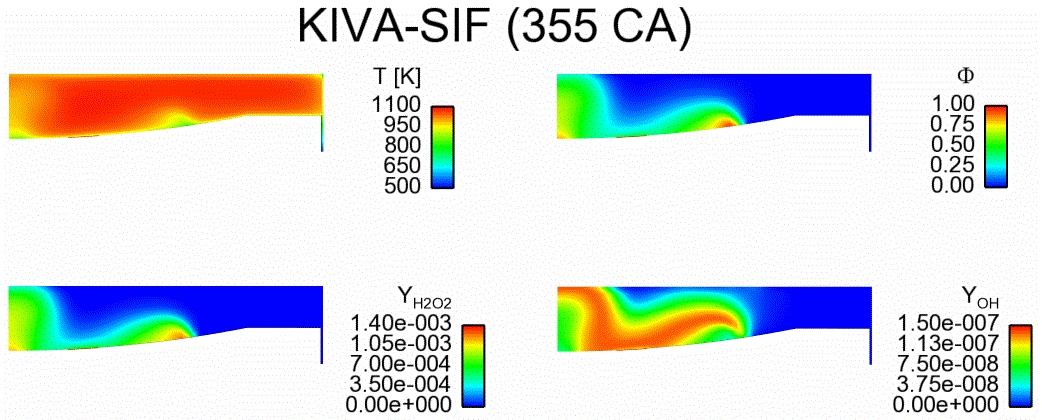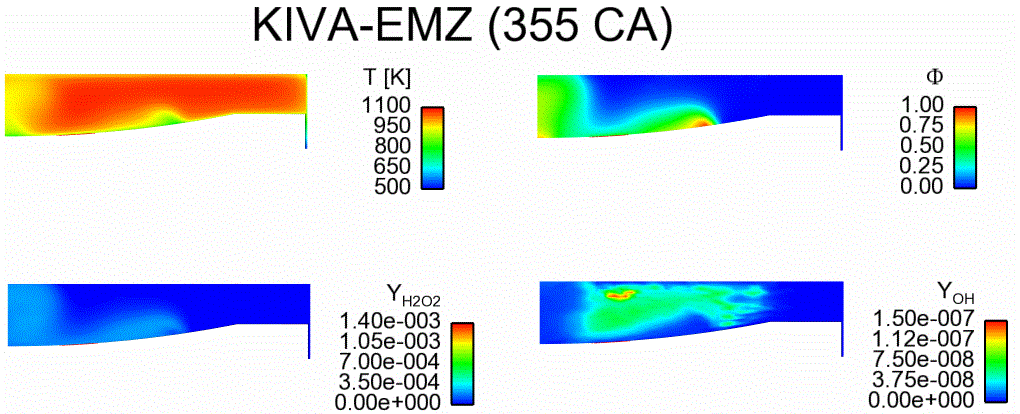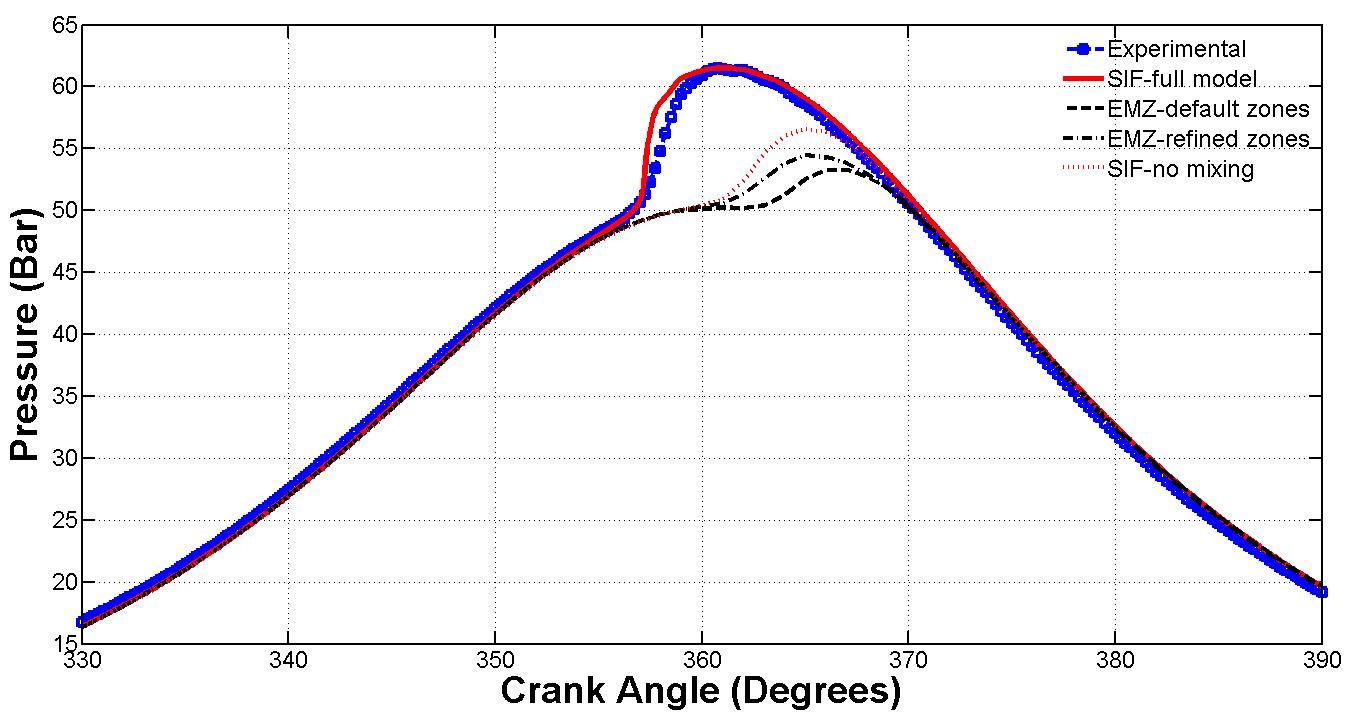


Participants
Pinaki Pal (Ph.D. student, University of Michigan).
Motivation and Objectives
Recent drive for cleaner and more efficient internal combustion engines has increased focus on low temperature combustion (LTC) strategies in compression ignition engines. Homogeneous charge compression ignition (HCCI), employing compression ignition of a lean premixed fuel-oxidizer mixture is one of the advanced LTC concepts that have been receiving substantial attention over the last few decades. However, it is very difficult to control the ignition timing and heat release rate in HCCI engines, resulting in very rapid pressure rise rates at high loads and high level of unburned hydrocarbon and CO emissions at low loads. In-cylinder stratification in composition and temperature can prevent simultaneous auto-ignition by changing the ignition delay of the mixture locally, thereby resulting in lower peak pressure and heat release rate. This can be achieved by a number of ways such as variable valve timing for residual gas trap, spark-assisted compression ignition and multi-stage spray injection. These advanced strategies, however, introduce considerable complexity to the combustion system. Numerical simulations can aid in the design process of modern engines, but require high-fidelity combustion models that are valid across a wide range of combustion regimes. Towards high-fidelity modeling of in-cylinder combustion, the aim of this project is to develop improved flamelet combustion models to accurately simulate mixed-mode combustion.
Modeling Approach
Full-cycle multi-dimensional CFD simulations of ignition and combustion processes are employed with flamelet-based turbulent combustion submodel. A spray-interactive flamelet (SIF) model is developed in order to that incorporates the interaction between spray evaporation and gas-phase combustion. The model is validated for varying levels of in-cylinder charge stratification resulting from different fuel injection timings in direct-injection HCCI engines. The fidelity of the SIF model is also compared against the extended multi-zone (EMZ) model.
Highlights of Results
The figures below show the comparison of the SIF and EMZ combustion submodels applied to the late-injection case. The isocontours of temperature, composition, and species concentrations provide distinct differences between the two models.


Comparison of the pressure rise history predicted by the two models also indicates that SIF model provides accurate prediction of the experimental data. The improved prediction of the SIF approach is mainly attributed to its ability to describe the subgrid-level turbulent transport processes.
